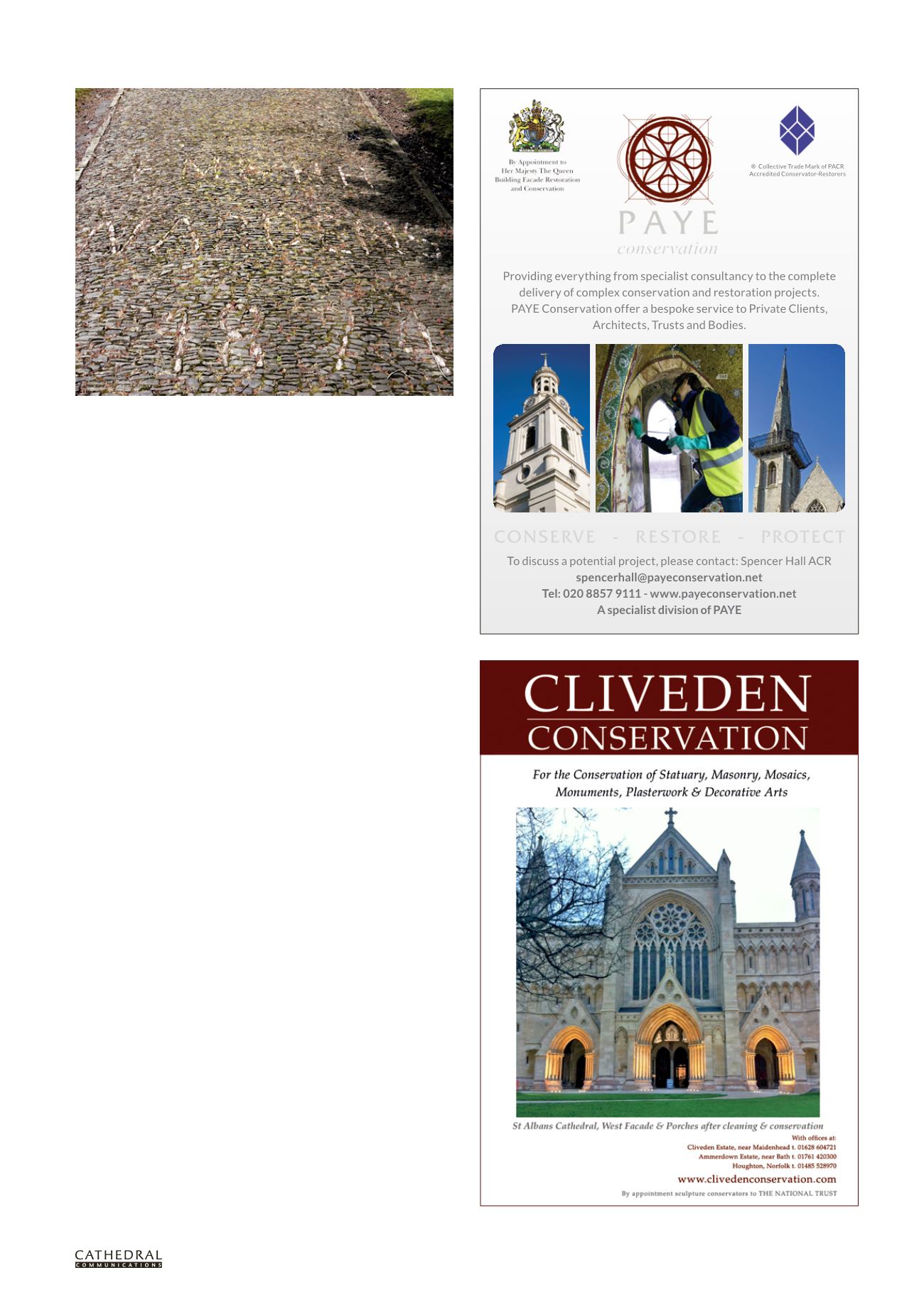

BCD SPECIAL REPORT ON
HISTORIC CHURCHES
24
TH ANNUAL EDITION
39
conservation
position the top edge to present an even surface, which is then
stabilised by infilling between the stones with a loose subsoil,
brushed and packed in place using a stiff hand-brush similar
to a churn-brush. It is usually best to water the repair area,
for example with a watering-can, then infill again if any of the
material washes in too deeply.
Where the cobbled area is not bordered by walls or heavy
stone kerbs, the edge must be particularly well constructed if
rapid deterioration is to be avoided. In this case, the edging
stones can be fixed with a mass of lime mortar sloping into the
ground (‘haunching’), which can be covered over, for example
with grass, to disguise it.
Most importantly, the cobbled area must shed water. It should
always have a camber to the edges and should generally be made
of a non-porous material so that rainwater is shed to the outer
edges. It is important that the rainwater is then carried away or
drains quickly.
Areas which have sunken and so collect water are
defective and should be repaired by bringing them up to
the level of surrounding cobbles. Often sunken areas result
from vehicles such as cherry-pickers or vans passing over
cobbles which were not designed to carry such traffic.
Repairs in the past have often been carried out in unsuitable
materials. It is vital to repair surrounding areas using similar
methods to the original work.
Cobbles are easy to maintain and, as always, a stitch in time
saves nine. Cobbled areas should be inspected regularly, taking
particular care to identify areas where the cobbles are becoming
loose. If appropriate action is taken quickly, cobbles can usually
be repaired. The most likely deterioration is where the infill
between stones is lost, or the edging of the cobbled area is
defective, causing individual stones to become loose. Also, areas
of cobble sometimes sink, usually as a result of being driven over
but occasionally because the substrate is subsiding. A sunken
area of cobble will not shed water effectively.
Cobble repairs are more challenging when they form
part of a much bigger project with a fixed timescale. In this
context it is important to recognise the cobbling for what it
is: a significant risk area which the project manager should
prioritise as early as possible to ensure that the right materials
are sourced and that a suitably skilled contractor is engaged.
ROBIN RUSSELL
BEng(Hons) is director of Corbel Conservation Ltd
(www.corbelconservation.co.uk) and has over 30 years' experience.
Calcite lettering on a path at St Peter’s, Tiverton


















